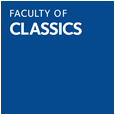Abstract
This paper will focus on Plato’s thought-provoking depiction of justice as special kind of harmonia (Resp. 4.443c-444a) that epitomises the best possible organisation of the soul, exploring his nuanced use of the model of lyre tunings in performative, theoretical as well as educational terms. By comparing Plato’s use of harmonic imagery with technical discussions of lyre tunings and their key role in educational settings, I will show how Plato exploited distinctive features of traditional Greek lyre harmoniai to give shape to his innovative understanding of the structure of the soul and the harmonious, but not strifeless, relationship between its individual components. In the second part of this paper, I will look at how the model outlined in the Republic sheds light on the musical structure that gives shape to the World Soul in the Timaeus, advancing a new interpretation of its elusive harmonic organisation.



